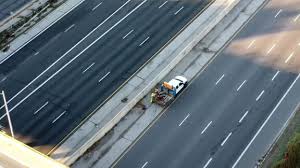
Introduction
The Gardiner Expressway, a critical artery in Toronto’s transportation network, recently faced a partial closure, bringing attention to the city’s ongoing infrastructure challenges. This highway is not only a crucial route for daily commuters but also plays a significant role in the overall traffic dynamics of the city. With the increasing congestion issues and the city’s development strategy, understanding the implications of this closure is vital for residents and city planners alike.
Details of the Closure
The Gardiner closure was first announced in early October 2023, with maintenance work scheduled to last for approximately two weeks. The city cited the need to conduct critical repairs and upgrades to ensure the safety of motorists and extend the lifespan of the expressway. This closure specifically affects the sections between Jarvis Street and the Don Valley Parkway, which normally handle a significant volume of daily traffic.
The timing of the closure has raised concerns, as it coincides with the fall commute when traffic typically increases due to the return of students to schools and the resumption of normal work routines. According to Toronto’s Transportation Services, the expressway typically accommodates over 160,000 vehicles each weekday, and the closure is expected to exacerbate current congestion on alternative routes.
Reactions and Adjustments
City commuters have expressed frustrations, given the potential for delays. Local news reports have shared anecdotal evidence of increased travel times on surrounding streets and alternate highways, such as the QEW and Lakeshore Boulevard. In response to the situation, the city has implemented a series of measures, including enhanced monitoring of traffic conditions and increased public transit options to alleviate congestion.
Public transport agencies have reported a surge in ridership, with many residents opting for TTC services during the closure. The Toronto Transit Commission announced additional shuttle services and extended bus routes to accommodate the increased demand, signaling a shift towards public transit as an alternative during infrastructure disruptions.
Conclusion
The Gardiner closure is more than just a temporary inconvenience; it highlights the pressing need for ongoing infrastructure investment in Toronto. As the city works toward modernizing its transit framework, the challenges posed by such closures may encourage policymakers to prioritize long-term solutions for the urban traffic landscape. For residents and commuters, staying informed about alternate routes and available public transportation is essential during these critical maintenance periods. As the city looks ahead, the completion of this maintenance work could pave the way for improved traffic conditions, reducing congestion and enhancing travel safety for all road users.



